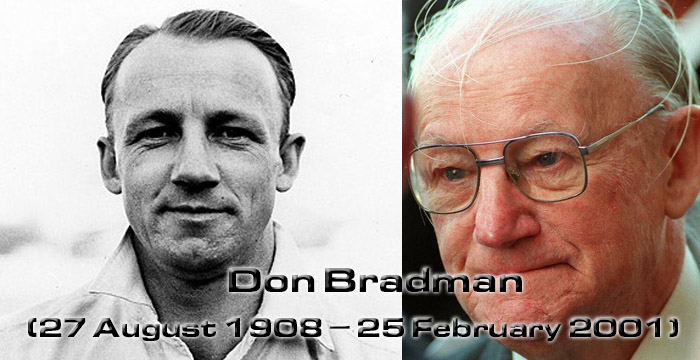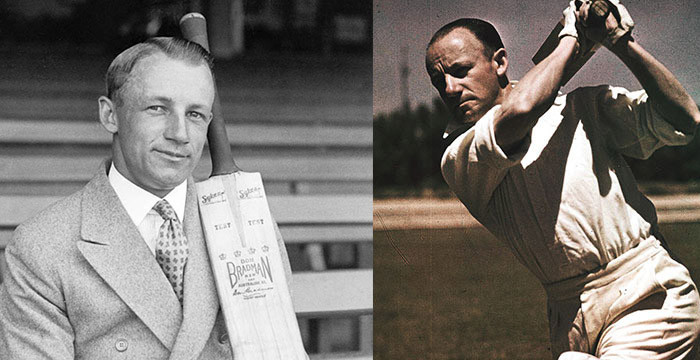Don Bradman’s 3-Over Century: The Untouchable Cricket Record
Sir Donald Bradman’s cricketing exploits are legendary, but none are more astonishing than his century scored in just three overs—a feat that remains one of the most extraordinary and unbreakable achievements in cricket history. Here, we explore every aspect of this remarkable innings, from the match context and scoring sequence to the legacy it left behind.

Match Details: Setting the Stage
On November 2, 1931, Don Bradman played for Blackheath against Lithgow in New South Wales. The game was organized to inaugurate a new pitch and was not an official first-class or Test match, but it drew a large crowd, eager to see “The Don” in action. At the time, Australian cricket used eight-ball overs, which meant three overs consisted of 24 deliveries, offering more scoring opportunities than today’s six-ball overs.
The Scoring Sequence: Ball-by-Ball Brilliance
Bradman’s onslaught was a masterclass in aggressive, calculated batting. Here’s how the runs came:
| Over | Bowler | Runs Scored | Sequence |
| 1 | Bill Black | 33 | 6, 6, 4, 2, 4, 4, 6, 1 |
| 2 | Horrie Baker | 40 | 6, 4, 4, 6, 6, 4, 6, 4 |
| 3 | Bill Black | 29 | 1, 6, 6, 1, 1, 4, 4, 6 |
Bradman faced 22 of the 24 balls, with his partner Wendell Bill smartly taking singles to keep him on strike. In just 18 minutes, Bradman reached 100 runs, a milestone that left the crowd and players in disbelief.
Aggressive Batting Style: The Key to the Miracle
Bradman’s aggressive batting style was central to this achievement. Known for his high strike rate and relentless boundary-hitting, Bradman combined technical innovation with power. His unique batting technique, decisive footwork, and mental acuity allowed him to dominate bowlers and maximize every scoring opportunity. Even in an era of generally slower scoring, Bradman’s ability to accelerate the run rate set him apart.
Motivation and Match Context
The innings was sparked by a playful provocation. Lithgow’s wicketkeeper reminded Bradman that bowler Bill Black had previously dismissed him and had been boasting about it. Bradman, motivated to respond, decided to “have a go,” unleashing a barrage of boundaries and sixes. Despite the informal setting, the quality and audacity of the innings instantly elevated it to legendary status.

Why the Record Is Nearly Impossible to Beat Today
Several factors make Bradman’s 3-over century nearly impossible to replicate:
- Eight-Ball Overs: The 24-ball window gave Bradman more opportunities to score than the modern 18-ball, three-over stretch.
- Strike Retention: Bradman’s partner ensured he faced almost every delivery, maximizing scoring chances.
- Modern Game Limitations: Today’s improved bowling, fielding, and stricter regulations make such a feat virtually unthinkable.
- Context: The relaxed, social nature of the match allowed for a style of play that’s rarely possible in professional cricket.
The Aftermath and Legacy
Bradman finished his innings on 256, including 29 fours and 14 sixes. Wendell Bill contributed 68, and bowler Horrie Baker conceded 62 runs in just two overs. The bat Bradman used is now preserved at the Bradman Museum, and the story of this innings has become part of cricket folklore.
Despite not being an official record, Bradman’s 3-over century is widely celebrated as one of the sport’s most astonishing achievements. It remains a testament to his extraordinary talent, aggressive mindset, and unique place in cricket history.
In summary:
Bradman’s 3-over century in 1931 stands as a cricketing miracle—a blend of technical mastery, aggressive intent, and historical circumstance that has never been matched and is unlikely ever to be surpassed.






